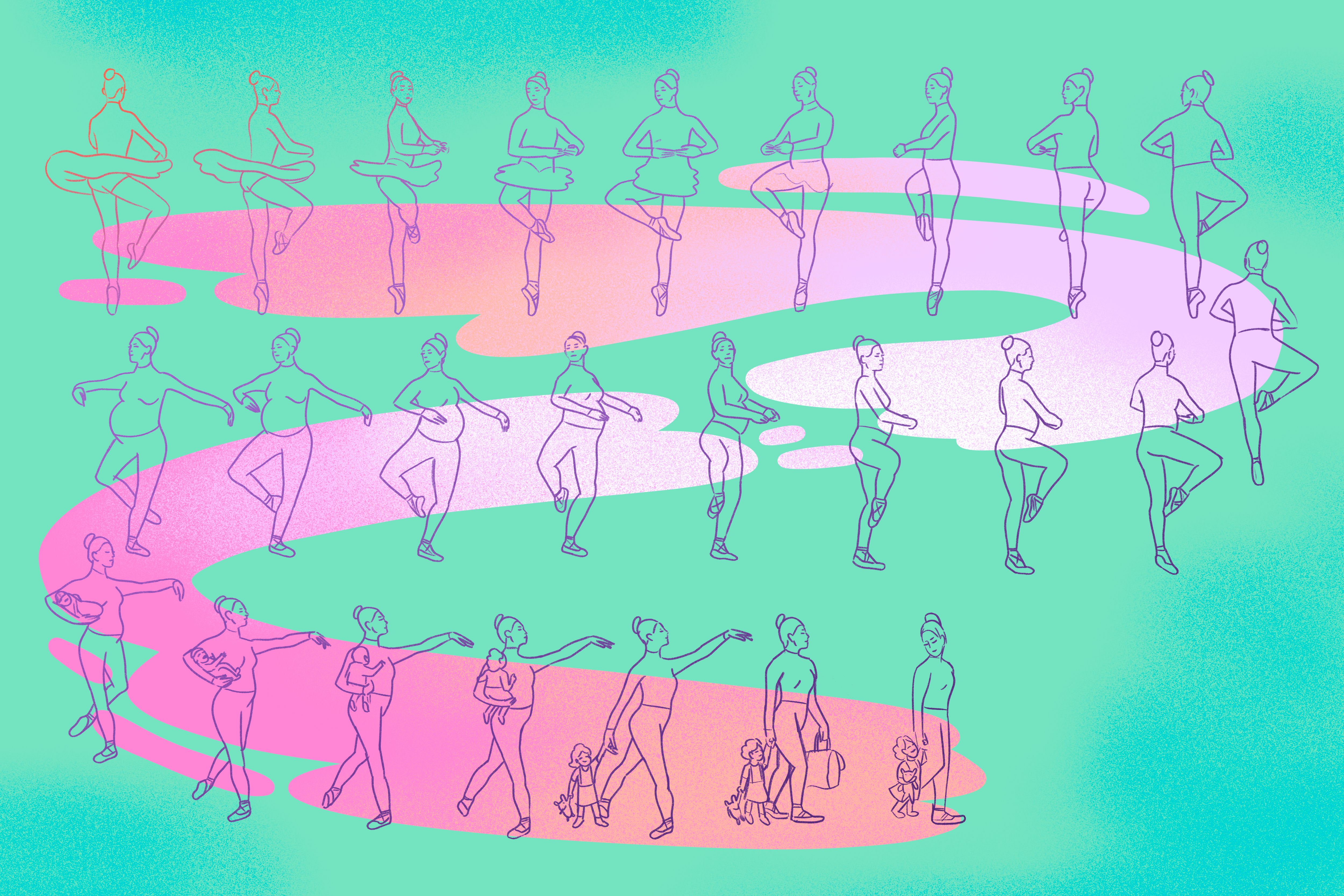
Beside the Pointe: How PNB Navigates Parenthood and Ballet
Leah Merchant drew an uneven breath and felt it catch in her throat. The Pacific Northwest Ballet dancer was grateful for the dimness of the theater, which obscured evidence of the tears she’d failed to hold back all morning. She wondered if grief, throbbing from her temples to the soles of her feet, could swallow you whole.
Months later, in early June 2021, Merchant posted a still on Instagram from this performance of for you. Her final piece was filmed at Dash Point State Park and McCaw Hall. Artistic director Peter Boal had commissioned the solo for PNB’s Season Encore, an annual celebration that traditionally fetes the company’s departing dancers and, in 2021, went virtual due to the pandemic.
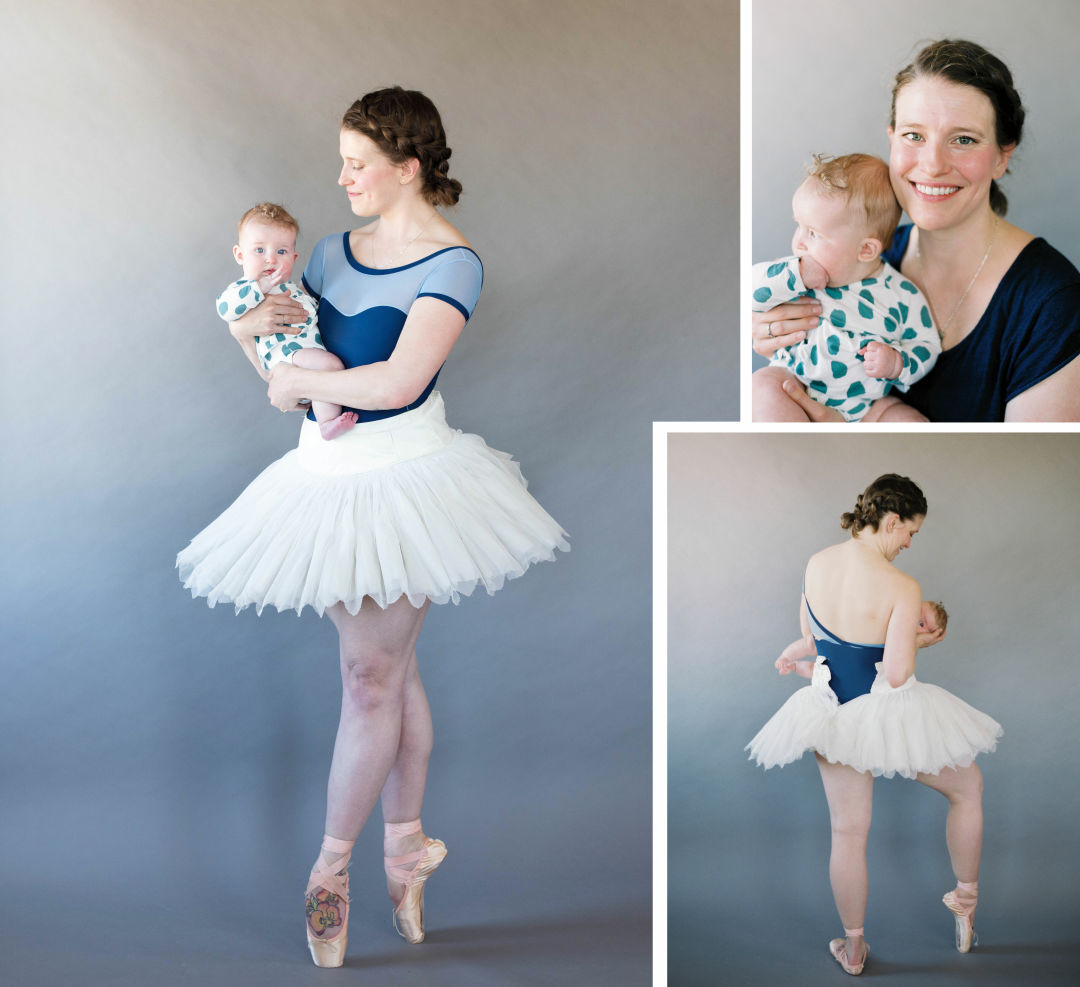
Former Pacific Northwest Ballet soloist Leah Merchant with her daughter, Olive.
Image: Sarah Carpenter
In the photo, Merchant faces an empty theater, palms meeting in reverse prayer behind her back. Her caption includes a reveal: “I was informed of the fact I would not receive a contract moving forward when I was 37 weeks pregnant, and was utterly heartbroken.”
The disclosure was unusual. Dancers who are let go often leave quietly, under the pretense of chosen retirement. The post garnered messages of outrage and solidarity in a corner of the internet usually reserved for fouettés and pointe shoe prep, commending Merchant for speaking out against what many still consider a deeply flawed industry. It allowed for a collective moment of indignant commiseration across a spectrum of maternal experience. Only recently have dancers begun to share candidly about the realities of navigating motherhood and dance.
But the post, as it so often goes, wasn’t the full story.
In the year before the collective upheaval of Covid-19, Merchant’s life had been upended. After the death of her sister that spring, she found herself relocating her preteen niece and nephew to Seattle. She withdrew from one of her two roles in the following rep so she could continue making arrangements. When she returned to the studio that fall to rehearse George Balanchine’s Agon, Merchant knew her dancing wasn’t as strong as she, or Peter Boal, would like. In October 2019, during her annual review, Boal broached the idea of her retirement.
He ultimately offered her a contract, with one glaring caveat: The 2020–21 season would be her last with the company. Then came some even bigger news: In March 2020, days before Washington’s stay-home order went into effect, Merchant discovered she was pregnant.
When the company pivoted to a digital season, Merchant assumed—perhaps naively, she admits—that the clock had paused. That the digital season wouldn’t count. That, if her 14-year tenure with the company wasn’t going to end on her terms, surely it would at least conclude on stage performing with dancers she considered family.
As a union representative, Merchant knew the American Guild of Musical Artists (AGMA) had requested its member companies bring back dancers for the 2021–22 season, presuming 2020–21 performances would be canceled. But AGMA stood behind PNB’s efforts to offer 28 weeks of employment during the first year of the pandemic when most other companies had shuttered, developing safety protocols that allowed dancers to return for a virtual season. “My experience is that PNB cares deeply about their artists,” says AGMA representative Nora Heiber. “But departure is more complicated for some than for others.”
When negotiations ended without the assurance of contract renewals for all members, Merchant’s hope faltered. Maybe, if she danced well enough that season, Boal would reconsider.
The artistic director had taken a chance on Merchant before. After a decorated career as a New York City Ballet dancer, Boal took the reins at PNB in 2005 and quickly became known for introducing eclectic, bold works to the company’s programming. Shortly after his move west, he invited the 19-year-old alum of the prestigious School of American Ballet in New York to join the Professional Division Program at Pacific Northwest Ballet School (PNBS), an intensive designed to help students hone their technique and transition from student to professional.
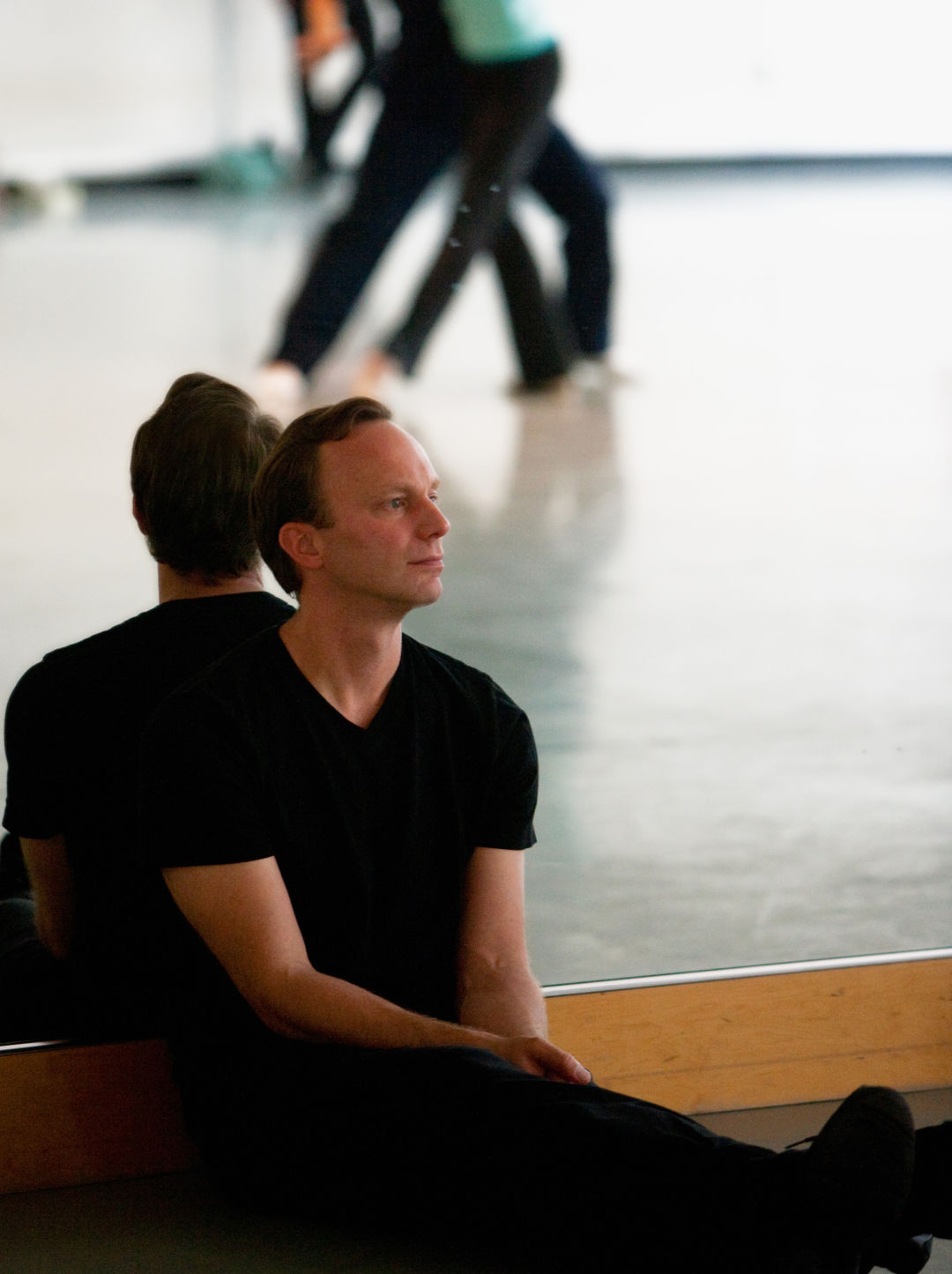
Artistic director Peter Boal has spent nearly two decades at the helm of PNB. "I think the industry as a whole is looking out for and caring for individuals better than it used to," he says. "I hope that’s the case with PNB."
A versatile dancer who brought distinctive vulnerability to her performances, Merchant assumed a significant role in William Forsyth’s anarchic One Flat Thing, reproduced in her apprentice year. From then on, she was consistently cast in contemporary pieces as well as in notable classical roles, like the regal Sugar Plum Fairy in The Nutcracker. In 2016 she ascended to soloist.
Going into her evaluation in October 2020, at 37 weeks pregnant, Merchant prepared for the worst. At 33, a veteran by ballet standards, Merchant had long accepted that many decisions in her career would be outside of her control—the reps she danced, the costumes she wore, the trajectory for promotion. But the swift dissolution of her vision of retirement, coupled with the isolation and fears around becoming a first-time parent during a global pandemic, was devastating.
When Boal confirmed his decision was final, Merchant went numb. She closed her laptop and started to shake, worried she might go into early labor. “I felt robbed of a tender, fleeting time,” she says, a now two-year-old Olive babbling in the background. “Instead of focusing on Olive’s arrival, I was an emotional wreck.”
Dancers will tell you ballet isn’t something you ever leave completely behind. Despite its all-consuming, competitive, transitory nature, for many, it’s not just a career—it’s how they move through the world. And no matter the circumstances, with the end of that career comes wave after wave of complex, sometimes conflicting, emotions.
Merchant quotes an infamous Martha Graham line. “A dancer dies twice—once when they stop dancing, and this first death is more painful.”
One of Merchant’s motivations for sharing her story was concern that, without adding her voice, her departure would feed into a frustrating narrative: that having a child means the end of a dancing career. The perception lingers in American ballet culture, despite decades of evidence to the contrary.
In a 1996 interview with The Washington Post, Francia Russell, former co-artistic director of PNB (and mother of three), relayed that she wanted to be both a mother and a dancer. But as a member of Balanchine’s New York City Ballet in the late 1950s, the story reports, “she knew that the pairing of dancing and family life was looked upon as not just foolishness, but treason.”
Known as the father of American ballet, Balanchine expected an “ethereal, almost spiritual, quality from his dancers—on and off the stage,” notes author Lucy Gray in Balancing Acts. Similarly, in Apollo’s Angels, Jennifer Homans writes, “For him, ballet was an art of angels, of idealized and elevated human figures.”
But dancers know that motherhood can add an extra layer of artistry to a performance. Former PNB principal Sarah Orza, who retired in 2020 after 13 years with the company, says motherhood cracked her wide open. “For Giselle or [Swan Lake’s] Odette, I had access to more depth of emotion than ever before.”
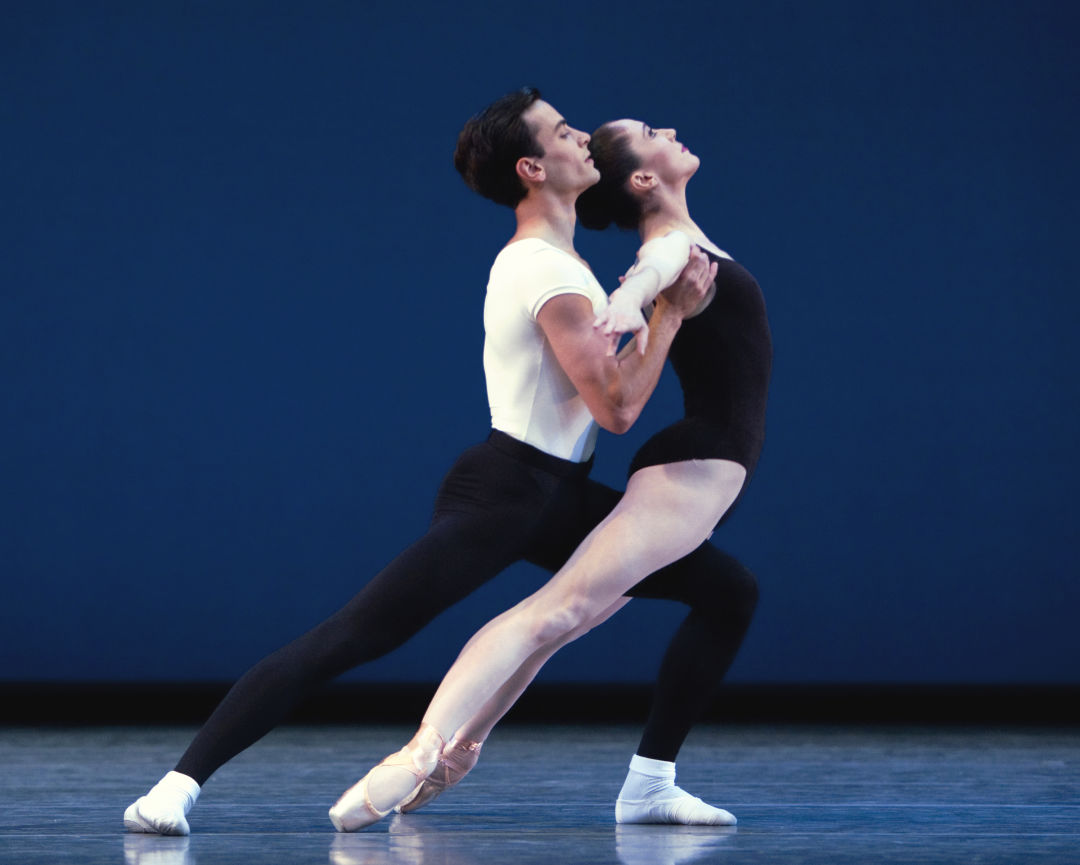
Former PNB principal dancer Sarah Orza had to find her own balance for juggling motherhood and ballet.
Image: Courtesy Angela Sterling/PNB
In the mid-to-late 1990s, principals Julie Tobiason and Louise Nadeau, as well as soloist Lauri-Michelle Rohde, were the first dancers at PNB to pursue motherhood and continue their careers. After them, the occasional dancer at PNB would have a baby—often a principal or a soloist dancing in more challenging roles but performing less than corps members, who are typically needed on stage every night. But in 2013 Orza and her husband, Seth, also a company dancer at PNB, kicked off a “baby boom” with the birth of their daughter, Lola. By 2016 five or six kids were racing around the studio, and dancers were pumping in dressing rooms.
Over the past five years, 10 women at PNB have had children. Of the 40 full-time contracted dancers in the company today, five are parents, with principals Elizabeth Murphy and Leta Biasucci the only mothers.
While other companies lead on child care support, PNB does offer one of the strongest parental leave policies in the industry. Birthing parents can take up to five months of leave after childbirth, and leave can be extended to six months without a loss of position or seniority upon a doctor’s advisement and a dancer’s request (12 weeks of paid family leave is stipulated in many AGMA contracts). There’s also a modified duty option, or “light work,” where injured or pregnant dancers can continue to work for full income, typically in administrative or teaching roles. Dancers have access to Pilates and physical therapy throughout their pregnancy and postpartum, which at many companies is paid by the dancer out-of-pocket.
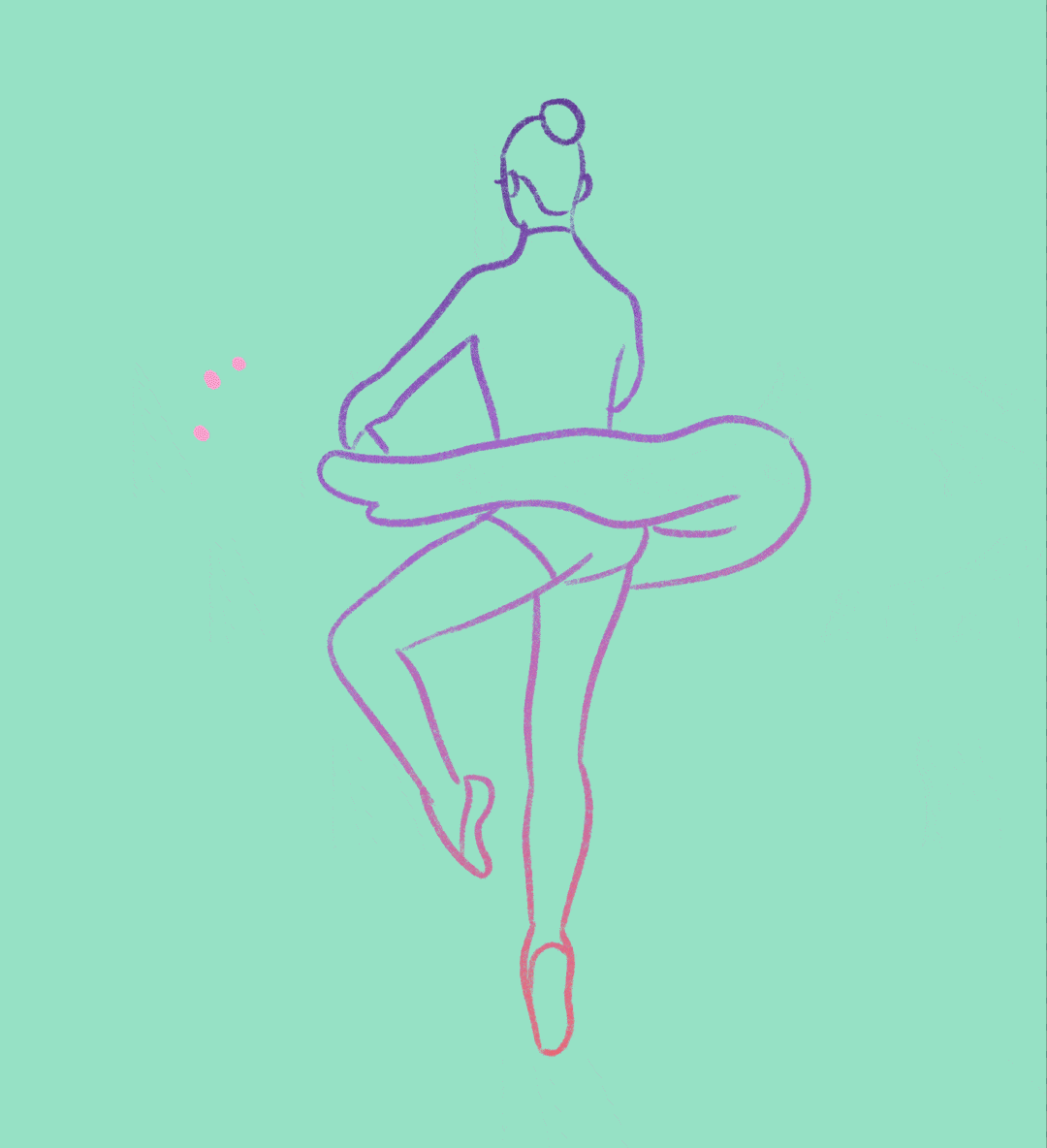
Image: Jordan Kay
Amy Brandt, editor in chief of Pointe Magazine, notes PNB is almost always ahead of the game when it comes to large institutional changes. “Since Peter Boal came on, there has been groundbreaking progress, particularly around equity and inclusion.” In the years before its 50th anniversary season, the company has increased dancers of color across its ranks; added a choreography class for upper-level female ballet students, an attempt to course correct a history of gender imbalance between male and female choreographers; and cast corps de ballet member Ashton Edwards, who identifies as nonbinary, in roles in Swan Lake and The Nutcracker typically held by cisgender females.
The last decade has seen a broader push across the industry to increase protections for dancers, including those who become parents. Unions have made a concerted effort to secure better leave policies and additional supports for dancers navigating motherhood, including infertility and pregnancy loss. The dismantling of Roe v. Wade also prompted AGMA to escalate protections and accommodations for all reproductive experiences, particularly abortion.
And across the country, dancers themselves are becoming increasingly vocal that the work doesn’t stop there. They want to see a shift to a more holistic view of returning to dance, from strength training to extra mental health supports to child care options.
For her part, PNB executive director Ellen Walker doesn’t shy away from the demands of empathy. “I think companies should take as much responsibility as they reasonably can,” she says. “Our society has a lot more to do for working mothers and working parents, but it wouldn’t occur to me to see a need and say, ‘We just can’t take that on.’”
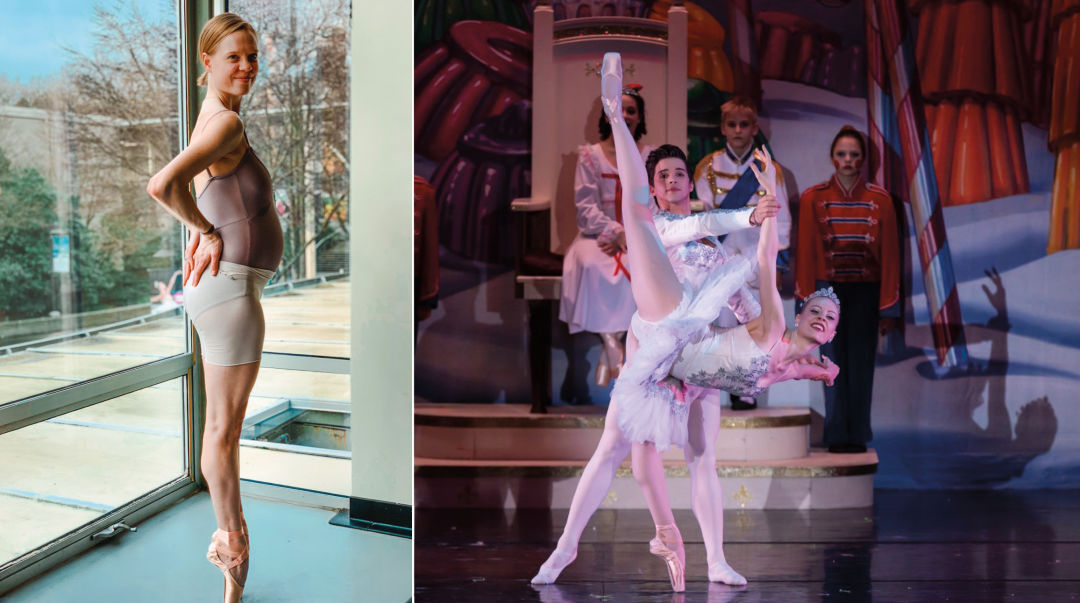
Emma Love Suddarth en pointe during her third trimester (left); Suddarth performing with her husband, Price, in The Nutcracker.
For former corps de ballet member Emma Love Suddarth (whose husband, Price, is a soloist at PNB), watching motherhood become more common at the company, and outwardly supported by leadership, made starting a family seem fully attainable.
Suddarth speaks quietly over Zoom to avoid waking her two-year-old son, Milo, from a nap. She’d known that eventually she’d want to stay home with Milo, but she didn’t want it to stop her from dancing. It frustrates her when people say you can have it all. “You can’t be home at eight to put your child down and perform. You have to choose one or the other.” Suddarth retired in 2021. Missing bedtime for another run of The Nutcracker or Swan Lake—the most demanding ballet a corps member can do—just wasn’t something she was willing to sacrifice.
Milo was a high-risk infant born during the height of a pandemic, so Suddarth and her husband met with Peter Boal to discuss their participation limitations to protect their son’s health. According to Suddarth, Boal told them not to worry about the year—it wouldn’t affect their standing. “Sometimes communication might happen later than it should, or there should be more groundwork laid,” says Suddarth. But she credits Boal for approaching conversations about parenthood with an open mind. For trying to be the good guy.
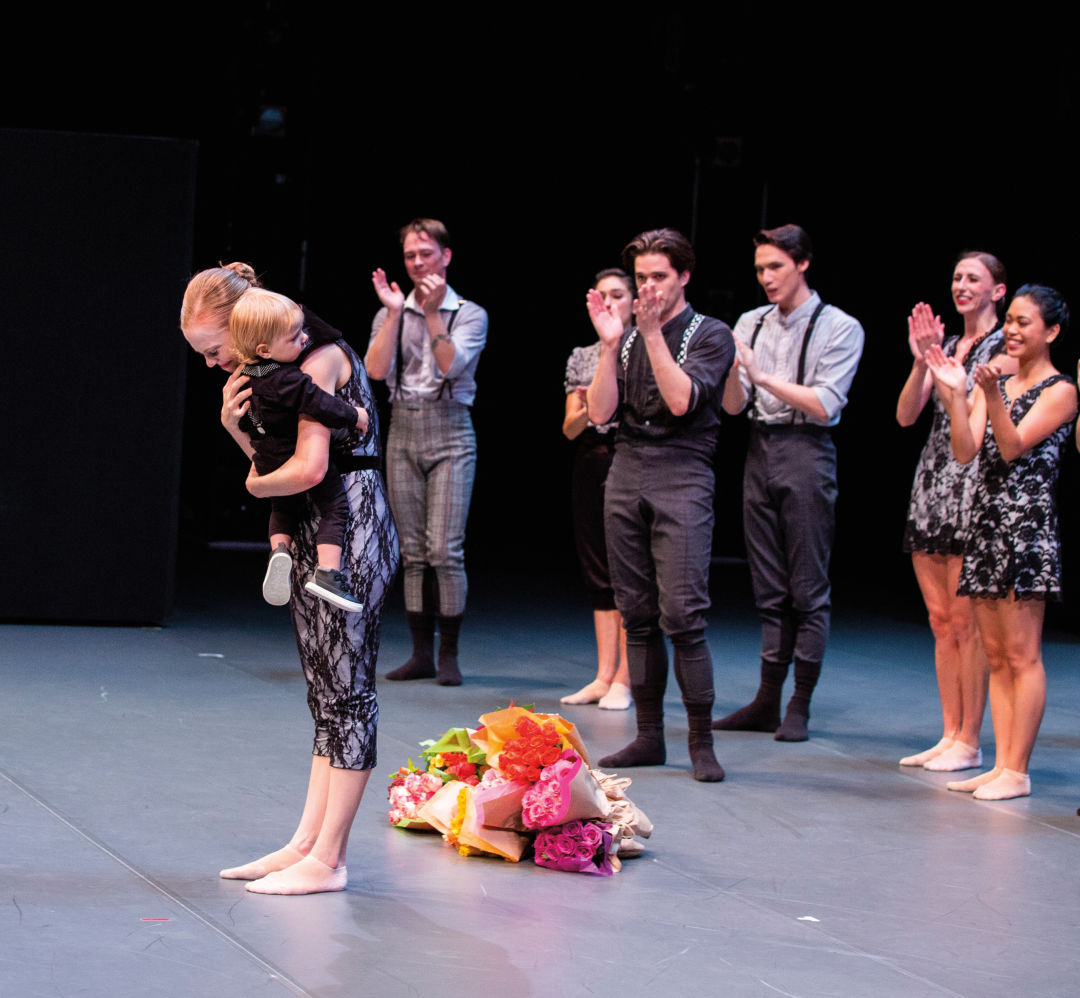
With the company back on stage, Suddarth received a more traditional send-off than Merchant.
Image: Courtesy Angela Sterling/PNB
Boal makes time to talk while he’s on the road in Chicago, doing a round of auditions for the PNBS summer session. “My job is to care for individuals and also this group of dancers, to find the best ecosystem that’s right for the company to move forward.” He’s soft-spoken and chooses his words carefully. “I think the industry as a whole is looking out for and caring for individuals better than it used to. I hope that’s the case with PNB.”
Over a career spanning two decades, former principal Sarah Orza’s performances were often defined by a sense of grace and quiet strength. But returning to ballet at four months postpartum challenged her mentally and physically. She tried not to compare herself to Kaori Nakamura, the last PNB dancer to give birth a few years prior. Nakamura was “a force of nature,” performing when her daughter was just a few months old, Orza says. The new mother would have to find her own balance.
She was taken aback when Boal questioned her commitment to the company. Yes, she had struggled, torn about leaving Lola. But she showed up every day and did her work as she always had. She was eventually cast in several principal roles in the 2013–14 season and major ones in Giselle and A Midsummer Night’s Dream, but it still nags her that she had to stress she wanted to be there, that she was making a choice to leave her daughter with a nanny every day.
“That’s the thing—he wants to be supportive and has always wanted dancers to be able to experience parenthood if they choose,” Orza says. “But the fact is, he runs a ballet company. You need people on stage when you need them on stage.” (While PNB doesn’t comment on confidential conversations between company dancers and artistic directors, spokesperson Gary Tucker shared that “these casting choices demonstrate Peter’s confidence in Sarah as an artist and company member.”)
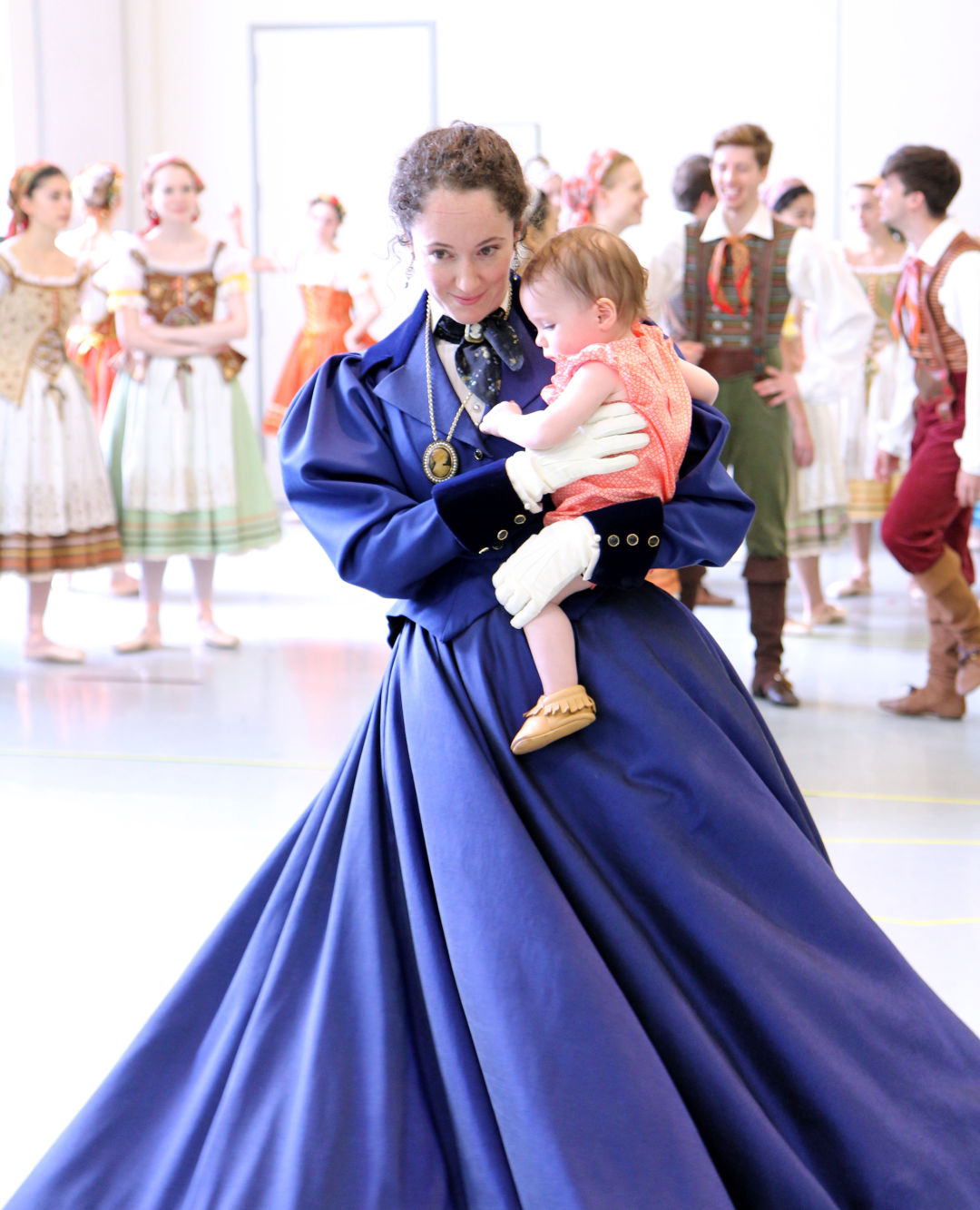
The arrival of Orza's daughter, Lola, in 2013 heralded a "baby boom" at the company. Here Orza holds Lola a year later, during a costume rehearsal of Giselle.
Image: Courtesy Lindsey Thomas/PNB
After spending the latter half of her career advocating for stronger parental policies like adding a fifth month of leave and securing a designated space at the studio for dancers’ kids, Orza opted to retire in 2020 and pursue a career as a postpartum doula. Her second child, Stella, was born in 2022. This time, Orza could approach motherhood on her own terms. She could take walks around her neighborhood in West Seattle instead of feverishly training to get back in the studio. Her brain and body were no longer pulled in opposite directions. “Motherhood is a softening and a calming, there’s a lot of gravity to it,” says Orza. “It’s nice to focus on my postpartum healing on my own time frame.”
“I was dancing in the nineties,” consulting therapist and former PNB member Josh Spell stage-whispers. “There weren’t mental health resources, at least not being advertised. But from what I see, ballet is making more space for the whole person.”
Sessions on normalizing mental health, building a multifaceted identity, and coping with perfectionism are now woven into the curriculum at PNBS in hopes that the younger generation of dancers enters their professional careers with more boundaries and knowledge. There aren’t currently mental health programs specific to motherhood or parenting at PNB, but Spell sees a path forward that includes formalized groups and a curated list of pre- and postpartum resources offered and recommended by the company.
In the meantime, dancers have developed support systems of their own, from Instagram communities to a text thread where they exchange takes on everything from potty training to returning to the stage to references for pediatricians. “Getting pregnant in a dance career is such a journey,” says former corps de ballet member Sarah Pasch Thomson, who danced with the company through summer 2022 (her husband, Ezra Thomson, continues to dance for PNB). “You need people who can relate about missing your kid or managing changes in your body.”
Boal, whose three children are now in their 20s (and whose wife is a former dancer), acknowledges the limitations of his insight. “It’s a unique perspective that I can’t have.”
But he remembers the life-altering shift in focus that is becoming a parent. In 2022 Boal spoke about the transition to fatherhood with other dancer dads for an episode of “PNB Is Listening,” a video series highlighting voices across the PNB community. “All of the things I was worried about or anxious about, that I held so high in my life,” Boal said, “just dropped down because of being a father.”
In 2017 Leah Merchant posted a photo of herself on stage in Plot Point, a potent experimental work from the mind of choreographer Crystal Pite, and a reflective caption on Instagram. “Sometimes in the ballet world it feels like right when you get the hang of something it’s over, and it’s often a bittersweet lesson in savoring the moments you do get on stage.”
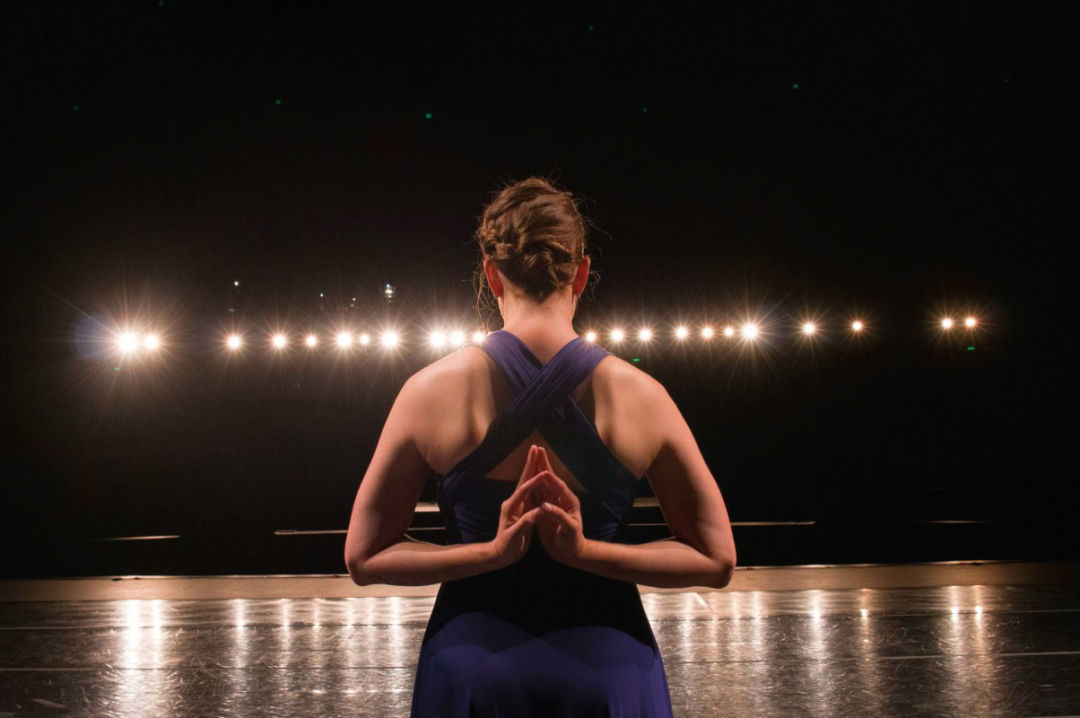
Leah Merchant in her final performance, for you.
Over the past two years, everything and nothing has changed. Full words replace Olive’s babbling and shrieks of excitement. Merchant takes the occasional class at an out-of-the way studio and wonders when dance will feel safe again. But lately, she’s noticed the grief doesn’t feel quite so all-consuming.
Her final performance, danced during one of her darkest moments, has been edited down to about five minutes long. Two minutes into for you, the music pauses. During this interlude, Merchant stands on the beach at Dash Point State Park, the Sound in the distance, cornflower blue dress alive in the breeze. She cradles Olive in her arms, a small smile forming on her lips. Then, suddenly alone, she moves with controlled urgency, almost glowing when the sun reaches past the clouds. As if she knows now that the clock never stops, really.




